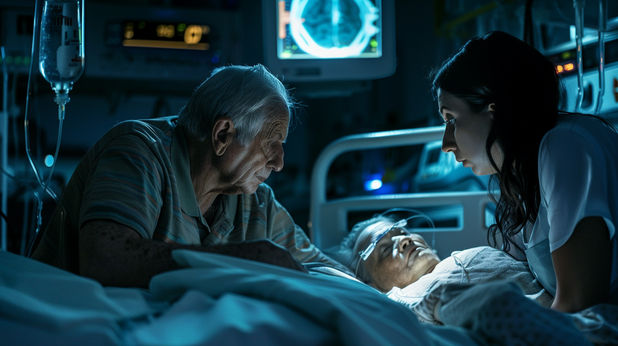According to the Centers for Disease Control and Prevention (CDC), hospitals in the State of Texas have a significantly worse infection rate for the hospital-acquired infection Clostridium difficile (C. diff.), in comparison to the rest of the country. This is based on the most recent data currently available.
Through the Centers for Medicare and Medicaid Services, the U.S. Department of Health and Human Services requires accredited hospitals to report on a variety of performance measures, including infection rates for central line-associated bloodstream infections (CLABSIs), catheter-associated urinary tract infections, surgical site infections (SSIs), MRSA bacteremia, and Clostridium difficile (C. diff.) laboratory-identified events.
While some of these infections are pretty straight forward to understand, two of them may benefit from a little explanation.
Central line infections
For patients who will likely be hospitalized for at least a few weeks, physicians often order a central line. A central line is thin, flexible central venous catheter that is inserted through the skin of the arm or the chest and directed to a large vein near the heart. Once it is in place, healthcare providers do not have to continue sticking the patient with new needles, but instead can use the central line to administer medications, fluids, blood products, and even nutrition.
While central lines are convenient for doctors and nurses, and more comfortable for patients, they increase the risk of infection. The reason is simple. Any time a foreign body is present inside the human body, it provides a place for bacteria to grow. Thus, the standard of care requires physicians and nurses to regularly monitor and assess the central line insertion site, looking for signs like redness, swelling, pain, and discharge.
C. diff. infections
Clostridium difficile (C. diff.) Is a type of bacteria that can cause illnesses ranging from diarrhea to life-threatening colon problems. The patients most at risk for a C. diff. infection are older adults placed on antibiotics in a hospital or long-term care setting.
The typical symptoms of a C. diff. infection include watery diarrhea three or more times per day for at least two days, and mild cramping and tenderness in the abdomen. In severe cases, a C. diff. infection can cause symptoms including watery diarrhea 10-15 times a day, a fast heart rate, fever, severe abdominal pain and cramping, blood or pus in the stool, nausea, dehydration, weight loss, and a loss of appetite.
Harris County hospitals with high infection rates
The most recent infection rate statistics currently available from the Centers for Medicare and Medicaid Services are for the one-year period spanning April 1, 2016, through March 31, 2017.
After looking at the data very carefully, I found that seven Harris County hospitals have higher infection rates than the national benchmark standards.
Bay Area Regional Medical Center, in Webster
This hospital has a higher infection rate for Clostridium difficile (C. diff.) than the benchmark for hospitals to meet nationwide, in the following data sets collected by Medicare and Medicaid:
C. diff. upper confidence limit
C. diff. observed cases
C. diff. intestinal infections
C. diff. predicted cases
Clear Lake Regional Medical Center, in Webster
This hospital has a higher infection rate for Clostridium difficile (C. diff.) than the benchmark for hospitals to meet nationwide, in the following data sets collected by Medicare and Medicaid:
C. diff. predicted cases
C. diff. patient days
C. diff. intestinal infections
Harris Health System, in Houston (including Ben Taub, Lyndon B. Johnson/LBJ, and Quentin Mease hospitals)
The Harris Health System hospitals have a higher infection rate for surgical site infections than the benchmark for hospitals to meet nationwide, in the following data sets collected by Medicare and Medicaid:
Surgical site infections (SSI) for colon surgery, predicted cases
SSI for colon surgery, number of procedures
Houston Methodist Hospital, in Houston
This hospital has a higher infection rate for Clostridium difficile (C. diff.) and central line-associated bloodstream infections (CLABSIs) than the benchmark for hospitals to meet nationwide, in the following data sets collected by Medicare and Medicaid:
C. diff. patient days
C. diff. intestinal infections
C. diff. upper confidence limit
C. diff. predicted cases
CLABSI observed cases
CLABSI number of device days
CLABSI in intensive care units (ICUs) and select wards
West Houston Medical Center, in Houston
This hospital has a higher infection rate for Clostridium difficile (C. diff.) and central line-associated bloodstream infections (CLABSIs) than the benchmark for hospitals to meet nationwide, in the following data sets collected by Medicare and Medicaid:
C. diff. predicted cases
CLABSI number of device days
CLABSI in intensive care units (ICUs) and select wards
CLABSI lower confidence limit
CLABSI observed cases
What you can do
If you are being treated at these hospitals or, in fact, any hospital, be aware of the risk of hospital-acquired infections. Be sure to share with your physicians and nurses any symptoms that you notice, which might be consistent with an infection. This includes things like an incision or catheter-insertion site that looks swollen, puffy, red, or has discharge; diarrhea; feeling feverish; or nausea and vomiting.
If you or a loved one has been seriously injured as a result of the hospital-inquired injury or infection, call Painter Law Firm, in Houston, Texas, at 281-580-8800, for a free consultation about your potential case.
__________
Robert Painter is a medical malpractice and wrongful death attorney at Painter Law Firm PLLC, in Houston, Texas. He represents patients and family members in lawsuits against hospitals, pharmacies doctors, surgeons, anesthesiologists, and other healthcare providers. He is a former hospital administrator who speaks and writes frequently on topics related to healthcare and medical negligence. He previously served as editor-in-chief of The Houston Lawyer magazine, and is currently on the board of editors of the Texas Bar Journal.





